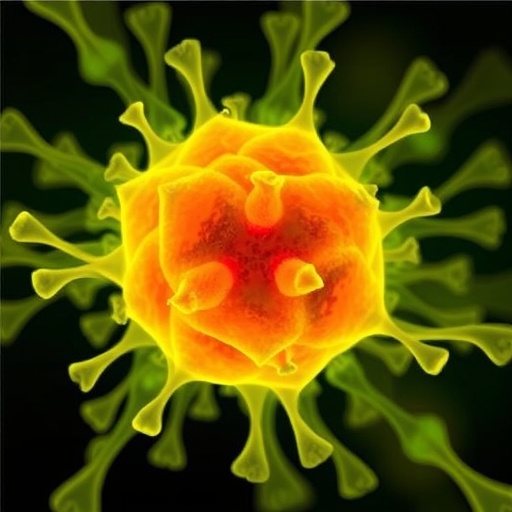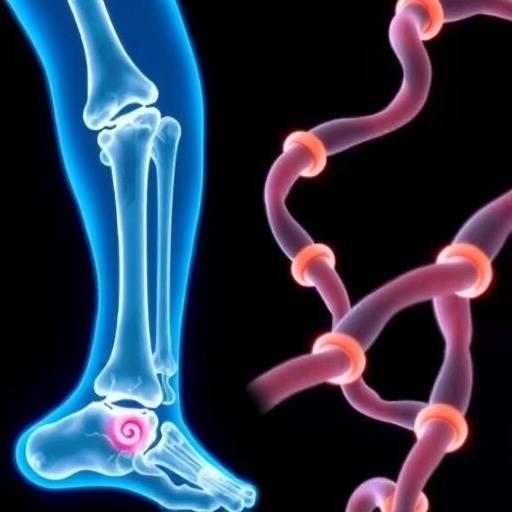
In a groundbreaking turn of biomedical research, a team at the Mayo Clinic has uncovered a novel approach to tackling type 1 diabetes by repurposing a mechanism originally observed in cancer cells. This discovery not only challenges conventional boundaries between cancer biology and autoimmune disease treatment but also paves the way for innovative therapies that could change the prognosis of this chronic disease. Type 1 diabetes, an autoimmune condition where the body’s immune system mistakenly targets and destroys insulin-producing pancreatic beta cells, currently lacks a cure, relying heavily on insulin administration and, in some cases, pancreatic islet transplantation under immunosuppression. The Mayo Clinic’s research illuminates a promising alternative grounded in molecular biotechnology and immunology.
Cancer cells have long been understood to possess an arsenal of tools that allow them to evade immune detection, one of which involves the modification of their surface with specific sugar molecules called sialic acids. These sugar moieties effectively cloak the cancer cells, enabling them to ‘fly under the radar’ of the immune system. Central to this evasion tactic is an enzyme known as ST8Sia6, which increases the density of sialic acid on the tumor cell membrane. The research team, led by immunologist Virginia Shapiro, Ph.D., hypothesized that if this same mechanism could be harnessed to protect healthy cells from aberrant immune targeting, it might serve as a powerful shield in autoimmune diseases such as type 1 diabetes.
Their recent study tested this hypothesis by genetically engineering pancreatic beta cells in preclinical mouse models prone to spontaneous autoimmune diabetes. These cells were modified to overexpress ST8Sia6, effectively ‘sugar-coating’ them with sialic acid, mirroring the immune evasion seen in tumors. Remarkably, these engineered beta cells showed a 90% efficacy rate in preventing the development of type 1 diabetes in the models. This indicates a substantial preservation of functional insulin-producing cells that would otherwise be decimated by the immune system’s misguided attack.
.adsslot_qxYApShMI9{width:728px !important;height:90px !important;}
@media(max-width:1199px){ .adsslot_qxYApShMI9{width:468px !important;height:60px !important;}
}
@media(max-width:767px){ .adsslot_qxYApShMI9{width:320px !important;height:50px !important;}
}
ADVERTISEMENT
The implications of these findings are profound. The immune tolerance induced by the engineered beta cells appears to be highly specific, meaning the immune system’s broader function remains intact. This was demonstrated by the continued activity of B and T lymphocytes and observed immune responses to other diseases within the same subjects. Such specificity suggests that therapy based on ST8Sia6 expression could provide localized immunoprotection without systemic immunosuppression, a common and risky component of current transplant protocols.
Justin Choe, M.D.-Ph.D. student and the study’s first author, highlights this selective immune modulation as a crucial step in developing curative approaches for type 1 diabetes. Rather than indiscriminately suppressing the immune system and risking opportunistic infections or cancers, the targeted enzymatic ‘sugar coating’ might teach the immune system to tolerate beta cells specifically, thus halting or preventing autoimmune destruction where it matters most.
This strategy emerges from a sophisticated understanding of the cellular glycobiology involved in immune recognition. Sialic acids on the cell surface engage with immune regulatory receptors, such as Siglecs (sialic acid-binding immunoglobulin-type lectins), which modulate immune cell activation and suppression. By amplifying sialic acid presentation through ST8Sia6 expression, engineered beta cells can actively manipulate immune checkpoints to create a tolerogenic microenvironment. This marks a significant shift from traditional immunosuppressive agents, which act broadly and disrupt immune surveillance throughout the body.
Beyond preserving endogenous beta cells, this enzymatic modification has exciting applications in islet transplantation. Current transplant recipients must endure lifelong immunosuppression to prevent graft rejection, leading to serious side effects. If pancreatic islet cells can be engineered to express ST8Sia6 and escape immune rejection, it could revolutionize transplant medicine for diabetes by eliminating the need for systemic immunosuppression, vastly improving patient outcomes and quality of life.
While the study is still in the preclinical phase, the robustness of the protective effect in spontaneous autoimmune diabetes models—considered the most clinically relevant murine models—heightens optimism for eventual translation into human therapies. The use of genetically engineered enzymes to induce immune tolerance exemplifies the emerging frontier of precision cellular therapies, where molecular insights bridge disease pathology and targeted intervention.
Dr. Shapiro emphasizes that these findings serve as an important proof-of-concept that reappropriates cancer biology insights for autoimmune disease therapy. She envisions a future where engineered beta cells or islet transplants can effectively ‘disguise’ themselves to avoid immune attack without compromising the immune system’s essential protective roles. Such a paradigm shift could ultimately culminate in more durable and less harmful treatments for millions living with type 1 diabetes worldwide.
The mechanistic insights derived from this research also deepen our understanding of immune regulation and offer a platform for exploring similar approaches in other autoimmune and inflammatory conditions. By leveraging enzymatic modulation of cell surface glycans, scientists may unlock novel ways to selectively instruct the immune system to restrain pathological self-reactivity without sacrificing overall immunocompetence.
This pioneering work received support from the National Institutes of Health and has been detailed extensively in the Journal of Clinical Investigation. It underscores Mayo Clinic’s commitment to translational research that blends fundamental science with clinical innovation to address unmet medical needs. As investigations continue, the scientific and medical communities eagerly anticipate subsequent demonstrations of safety and efficacy in human trials, which could inaugurate a new chapter in the fight against type 1 diabetes.
Subject of Research: Not explicitly provided in detail but pertains to enzymatic engineering of pancreatic beta cells to prevent autoimmune diabetes.
Article Title: ST8Sia6 overexpression protects pancreatic β cells from spontaneous autoimmune diabetes in nonobese diabetic mice
News Publication Date: 1-Aug-2025
Web References:
https://www.jci.org/articles/view/181207
https://www.mayoclinic.org/
https://www.mayoclinic.org/diseases-conditions/type-1-diabetes/symptoms-causes/syc-20353011
References:
Journal of Clinical Investigation, study by Virginia Shapiro, Ph.D. et al.
Image Credits: Not provided
Keywords: ST8Sia6, sialic acid, pancreatic beta cells, type 1 diabetes, autoimmune disease, immune tolerance, glycobiology, enzyme engineering, islet transplantation, immunosuppression, Mayo Clinic, cancer immune evasion
Tags: breakthroughs in diabetes researchcancer cell evasion strategiesimmune system and chronic diseasesinnovative therapies for autoimmune diseasesMayo Clinic research on type 1 diabetesmolecular biotechnology in diabetesnovel approaches to diabetes managementpancreatic beta cell protectionrepurposing cancer biology in diabetes treatmentsialic acids in immunologyST8Sia6 enzyme functionsugar coating technique for cells





